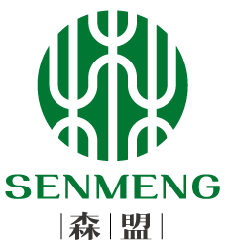We all know cork is a great insulating material, and is obtained from the bark of cork tree, but do you know how cork is made? It all starts in the cork oak forest, cork tree are harvested every nine years, once they reach maturity, it doesn’t harm the tree, and the cork bark regrows. the year of harvest is marked on the trunk, so each tree isn’t harvested at the wrong time.
1.Harvest bark
The process of cork tree harvesting happens between the months of early May to late August. It is important to note that skilled cork harvesters known as extractors carry out the activity with their hands and no mechanical stripping devices are used for this purpose. These experienced cork extractors use a specialized cork axe to split the outer bark and peel it away from the tree. Vertical and horizontal cuts are made through the bark. All this is done carefully so as not to hurt the living part of the tree. It is usually done on the trunk, however, in case the tree is large, the lower branches are also used. The layer is then removed using the wedge-shaped side of the hatchet. Overall, cork tree harvesting is done very carefully and gently.
The bark is carefully removed from the tree. This is done by hand by experienced workers. Workers use a specialized cork axe or machete to meticulously pull the bark away from the trunk of the tree. This often requires multiple people to execute properly.
Fortunately, the bark removal process actually helps the cork tree regenerate and does not harm the tree at all.
The bark harvested from cork tree, the harvested cork planks are stored on pallets before processing. Good cork companies will store them on concrete rather than bare earth, lowering the risk of contamination
2.Treatment
After Cork bark that has been stripped from cork oaks, it’s stacked outside to dry and cure in the sun. This can take anywhere from a few weeks to a few months. The bark is ready for the next step after they’ve released some of their moisture and flattened out.
After the cork bark lays flat, the cork is boiled and washed, which softens the boards up to make them flat, at this point, the bark is usually treated with a fungicide to stop any potentially damaging spores that could degrade the quality of the cork, these boards are then sorted for various qualities, the high quality cork boards are cut into strips with the thickness of a cork stopper and the natural wine corks are punched out of these strips. The off-cuts that are left over from this process are added to the crusher to make cork granules.
The best bits of cork are punched out to make high quality corks and the remainder of the cork is used in all sorts of ways – mostly it is shredded then stuck together to make agglomerated cork products such as cork flooring or cork shoe soles. The specific treatment that is given to the cork at this stage is what determines the exact properties of the end cork product.
The cork is now ready to be processed into wine corks, cork fabric, fishing nets, flooring, and more. The cork can now be cut, rolled, pressed, or treated again. What the cork is treated with depends on the applications it’s being prepared for. For example, it’s common for wine corks to be treated with hydrogen peroxide to inhibit bacterial growth.
3.Production
Now let is see the cork production process:
Cork stopper made – the great strips of bark will hand-punch or machine punched by the skilled workers, after punch, the cork stopper are optically sorted and sorted by eye to take out the top grade corks.
Cork discs made — Some cork planks are too think to have natural corks punched from them, so these are sliced into thin strips, which are then used to make discs of natural cork. These are used to make either Champagne corks, or technical corks known as one-plus-ones: a cylinder of agglomerate cork with a disc of natural cork at each end.
Agglomerate cork made – the agglomerate portion of the cork is made up of what would otherwise be waste cork, after the corks have been punched, the remaining cork can be ground up to make granules that can then be glued together to make agglomerate cork.
Cork rod made – The granules are combined with polyurethane food-grade glue in an extrusion process, to make rods of cork.
To make fancy consumer products like cork purses, cork shoes, cork coasters, designer articles – The cork slabs are sliced finely and laminated on fabric, and the sites are treated with a protective coat for strength, finally many beautiful cork products are designed, printed and produced as housewares and accessories.
Best of all, no cork goes to waste. leftover cork from the manufacturing process is chipped and made into corkboard, construction products, or insulation. So the story of cork is one of a completely sustainable product where every last bit is used productively and nothing gets wasted. The challenge to a cork supplier is to maximise the value out of every piece of the cork bark.
